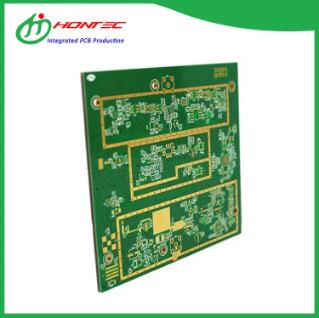The Crucial Role of Layer Thickness in Multilayer Boards for Optimal Performance
2024-07-24
Introduction
Multilayer printed circuit boards (PCBs) are foundational in modern electronics, offering compact and efficient designs for complex circuitry. One of the most critical factors that affect the performance and reliability of these boards is the thickness of each layer. In this blog, we will delve into how the thickness of each layer impacts the overall performance of multilayer boards and discuss best practices for optimizing these thicknesses.
Understanding Multilayer Boards
Multilayer boards consist of multiple conductive layers separated by insulating materials, all laminated together into a single, compact structure. These boards are essential for high-density and high-performance electronic applications, ranging from consumer electronics to advanced medical devices.
Impact of Layer Thickness on Performance
The thickness of each layer in a multilayer board significantly influences various performance aspects, including electrical performance, thermal management, and mechanical stability.
1. Electrical Performance
1. Impedance Control
The impedance of signal traces is determined by the thickness of both conductive and dielectric layers. Consistent layer thickness is crucial for maintaining controlled impedance, which is vital for high-speed and high-frequency circuits. Variations in layer thickness can lead to impedance mismatches, causing signal reflection and degradation.
2. Signal Integrity
Thicker dielectric layers can help reduce crosstalk between adjacent signal layers by increasing the distance between them. This is particularly important in high-speed circuits where signal integrity is paramount.
3. Power Distribution
Thicker conductive layers, especially for power and ground planes, provide lower resistance paths for current flow, improving power distribution and reducing voltage drops. This is crucial for maintaining stable operation in high-power applications.
2. Thermal Management
1. Heat Dissipation
The thickness of the conductive layers plays a key role in thermal management. Thicker copper layers can dissipate heat more effectively, which is essential for preventing overheating in high-power circuits. Effective heat dissipation enhances the reliability and lifespan of the board and its components.
2. Thermal Resistance
The overall thermal resistance of the board is influenced by the thickness and material properties of both conductive and insulating layers. Optimizing these layers for better thermal performance can prevent thermal-related failures and improve the board's overall reliability.
3. Thermal Expansion
Different materials expand at different rates when exposed to heat. The thickness and composition of each layer affect the board’s thermal expansion properties. Proper management of thermal expansion is crucial to avoid warping, delamination, and other mechanical failures during thermal cycling.
3. Mechanical Stability
1. Rigidity and Flexibility
The thickness of the insulating and conductive layers contributes to the board’s overall mechanical strength. Thicker layers generally enhance rigidity, making the board more resistant to bending and mechanical stress. Conversely, for applications requiring flexibility, such as flexible PCBs, thinner layers are preferable.
2. Durability
Thicker layers can enhance the board’s durability, making it more resilient to mechanical wear and tear. This is particularly important in applications where the board will be subjected to physical stress or vibration.
Best Practices for Optimizing Layer Thickness
Optimizing the thickness of each layer in a multilayer board involves balancing performance requirements, material properties, manufacturing capabilities, and cost considerations. Here are some best practices:
1. Application-Specific Design
Tailor the layer thickness based on the specific requirements of the application. For high-speed circuits, focus on precise impedance control, while power electronics may prioritize thermal management.
2. Material Selection
Choose materials that offer the best combination of electrical, thermal, and mechanical properties. For example, high-thermal-conductivity materials can improve heat dissipation, while low-dielectric-constant materials can enhance signal integrity.
3. Collaborate with Manufacturers
Work closely with PCB manufacturers to understand their capabilities and limitations. This collaboration can help ensure that the design can be reliably manufactured within the specified layer thicknesses.
4. Conduct Simulations and Testing
Use simulations to predict the impact of layer thickness on performance and validate these predictions with physical testing. This iterative process can help optimize the design for the best performance and reliability.
5. Cost-Benefit Analysis
Balance the performance benefits of thicker layers with the associated costs. While thicker layers can enhance performance, they also increase material and manufacturing costs. Finding an optimal balance is key to delivering cost-effective solutions.
Conclusion
The thickness of each layer in a multilayer board is a critical factor that impacts its overall performance. From electrical performance and signal integrity to thermal management and mechanical stability, optimizing layer thickness is essential for designing high-performance, reliable PCBs. By understanding the role of layer thickness and following best practices for optimization, designers can create multilayer boards that meet the demands of modern electronic applications, ensuring superior performance and longevity.



